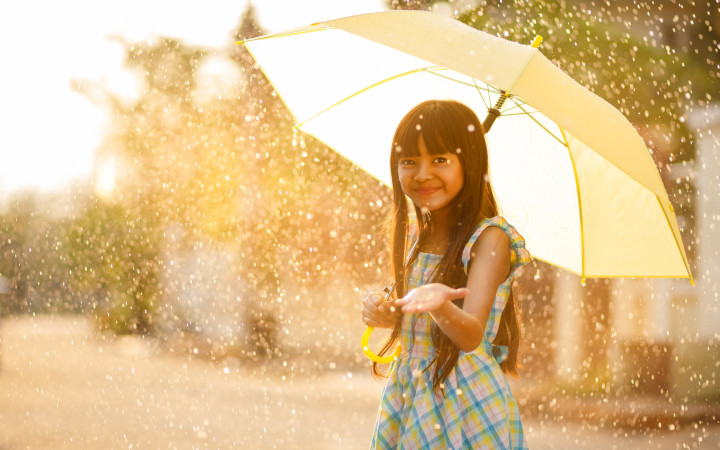Today’s Wonder of the Day was inspired by Gracelynn. Gracelynn Wonders, “Why does it rain?” Thanks for WONDERing with us, Gracelynn!
Pour a glass of water and take a sip. Pretty good, isn't it? Would you believe the water you're drinking has been around for millions of years? It's true!
Before any creatures were living on land, your water was part of the ocean. The water we have on Earth has been here for a very, very long time, and Mother Nature has been constantly recycling it through the water cycle.
When you toss a can, bottle, or newspaper in the recycling bin, it heads to a collection center for recycling. Nature has been recycling the Earth's water supply since the beginning of time. There are four phases to the water cycle: evaporation, condensation, precipitation, and collection.
Evaporation occurs when the Sun heats up water in lakes, rivers, oceans, and even swimming pools and turns it into water vapor or steam. The evaporated water goes into the air.
Once water vapor is in the air, it rises into the atmosphere, cools, and forms clouds through a process called condensation. If you have ever poured a cool glass of lemonade on a hot day, you have probably seen condensation in action.
Water forms on the outside of your glass, but it hasn't magically leaked through from the inside. The water droplets on the outside of the glass are condensed water vapor from the air. The warm summer air contains water vapor, and when it comes in contact with the cool glass, the vapor is chilled and turns back into liquid water.
The next step in the water cycle — precipitation — occurs when so much water vapor has condensed that the air can no longer hold it. Clouds become heavier and heavier until eventually the water falls back to the Earth in the form of precipitation. Depending on atmospheric conditions and temperatures, precipitation can arrive on Earth as rain, hail, sleet, freezing rain, or snow.
When water falls back to Earth as precipitation, it ends up in rivers, lakes, oceans, swimming pools, rain barrels, bird baths, and lots of other places. This final step of the water cycle is called collection.
Some precipitation also ends up on land. Some of this water soaks into the ground and becomes “groundwater." Plants and animals use groundwater for drinking. Other groundwater runs off the land and back into streams, rivers, lakes, and oceans…and the water cycle begins again!




